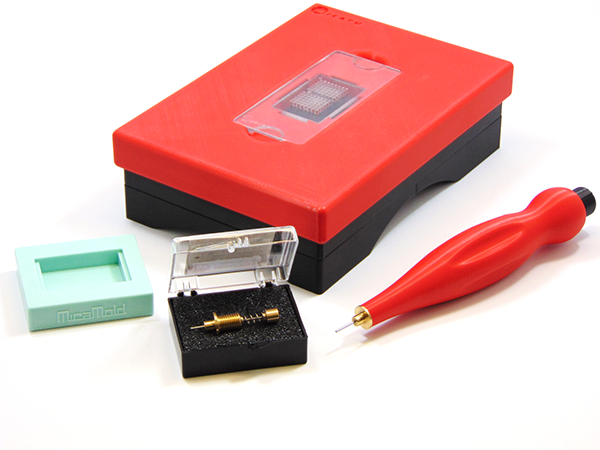
In 2003 Stephen Hewitt had a great idea—build a piece of lab equipment that could efficiently analyze tissue samples for cancer research. True, this technology was already available, but only for folks who had a scientific laboratory and the money to purchase one.
Hewitt, a staff clinician at the National Cancer Institute (NCI), wanted to develop one of these devices—called a tissue microarray—for a fraction of the cost of currently available automated devices. But he needed help making his dream a reality.
Once Hewitt had a patent, the NCI SBIR Development Center released a call for contractors to help Hewitt design, manufacture, and commercialize his invention. The Phase I Small Business Innovation Research (SBIR) contract was awarded to Micatu, Inc. in 2012. “It seemed like something that we had the right sets of skills to do,” says Michael Oshetski, Micatu’s Chief Executive Officer.
The high throughput nature of the device can significantly speed up cancer research. And the lower cost ensures more researchers can access it.
New York-based Micatu specializes in both design engineering consulting and contract manufacturing, mostly related to optical sensors. But Oshetski says because of the company's experience in design and manufacturing, and especially in managing contracts, the team was in a good position to help Hewitt and the NCI commercialize an affordable product. The Micatu team worked with Hewitt’s lab to develop a prototype of the device. “We essentially built a very low-cost tissue microarray,” says Oshetski.
A tissue microarray device allows researchers to test and analyze multiple tissue samples at the same time. The high throughput nature of the device can significantly speed up cancer research. And the lower cost ensures more researchers can access it.
Micatu received a Phase II SBIR award in 2014 to further refine their tissue microarray and to plan for making the device widely available. The company has shipped kits to researchers in five continents.

Not only is Micatu’s tissue microarray device much less expensive than other arrays on the market—in some cases by 30 times—the team has designed a product that doesn’t require electricity, so the microarray can be used in the field and in developing countries where power isn’t always available. The tissue microarrays are also manufactured on demand using 3D printing, so an expensive inventory isn’t required.
Many of the calls Oshetski receives to purchase the microarrays are from students in research labs that wouldn’t otherwise have the funding for this type of equipment. Oshetski says the SBIR contracts and grants are “critical for getting [many] technologies out of the lab and into the marketplace.”







